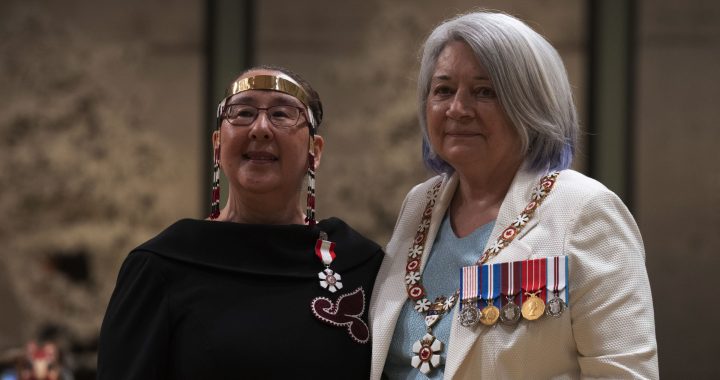Dennis Ward
APTN National News
The Standing Rock Sioux Tribal Council is asking anti-Dakota Access Pipeline demonstrators, known as water protectors, to leave their protest camp by Monday.
The Tribal Council released a statement Thursday evening moving up the planned date for people to leave the camp, which was once known as the Oceti Sakowin Camp, and sits just over the reservation’s border. At its height, the camp saw as many as 10,000 people plant stakes in the area.
“We understand and acknowledge the power of the camps in bringing us this far in our fight against the Dakota Access Pipeline. We maintain, however, that given current conditions, both physical and political, the focus must shift from maintaining camps to being at the political and legal forefront. The new regime will not respond to the camps with moderate actions,” the Tribe said in its statement.
The Standing Rock Tribal Council had previously called on supporters to leave the camp near the Dakota Access Pipeline construction zone. The decision came after the community of nearby Cannonball—which is part of the Standing Rock reservation—came forward with a resolution asking that, for liability reasons and as a result of the social and financial strain caused by the continued presence of demonstrators, the Tribal Council consider disbanding the camps.
The presence of the water protectors and their continued marches and actions have given North Dakota authorities justification to continue blocking Hwy 1806 which provided a direct route from the reservation to Bismarck, the state’s capital city. The highway blockade has cost the tribe’s casino customers who are now forced to drive an additional 20 to 30 minutes via detours. The blockade has also created a health risk by increasing the travel time for ambulances carrying patients with serious maladies needing treatment in Bismarck.
However, the hundreds of people still at the camps may have a new place to move. The nearby, Cheyenne River Sioux Tribe is offering to lease private property near Standing Rock.
Remi Bald Eagle, the Intergovernmental affairs coordinator for the Cheyenne River Sioux Tribe told, APTN National News they’re currently in negotiations to set up a “safe area for our Tribal members.”
The new camp, if established would be on higher ground and include aid stations and medical tents. Bald Eagle says the agreement under negotiation could include allowing non-Tribal members to camp there as well. There is already heavy equipment on site ready to clear snow for the new camp if a lease agreement is reached.
Bald Eagle says the Chairman of Cheyenne River Sioux Tribe “feels the water protectors, tribal and non-tribal, that have come out to the site and stood up and put themselves at risk are a very under-appreciated people.”
On Tuesday, US President Donald Trump signed a presidential directive to complete construction of the Dakota Access Pipeline. In December, the Army Corps of Engineers denied the easement the pipeline needed to burrow beneath Lake Oahe, the reservoir on the Missouri River from where the Standing Rock Tribe draws its water.
Chase Iron Eyes, one of the grassroots leaders from Standing Rock still involved with the camp, told APTN about 500 people still remain and the desire remains strong to continue the fight.
APTN is sending a team down to Standing Rock this weekend to continue coverage of the ongoing fight against the Dakota Access Pipeline.
@DennisWardNews











